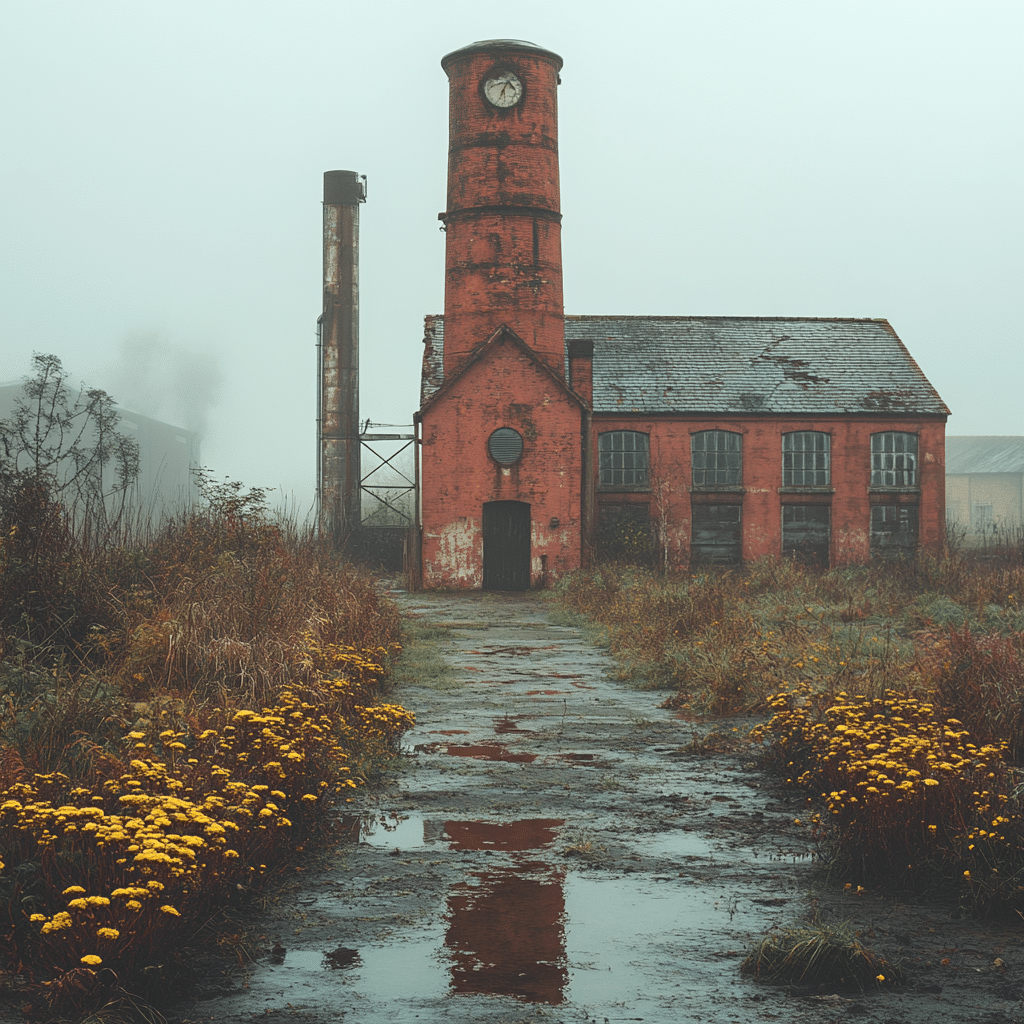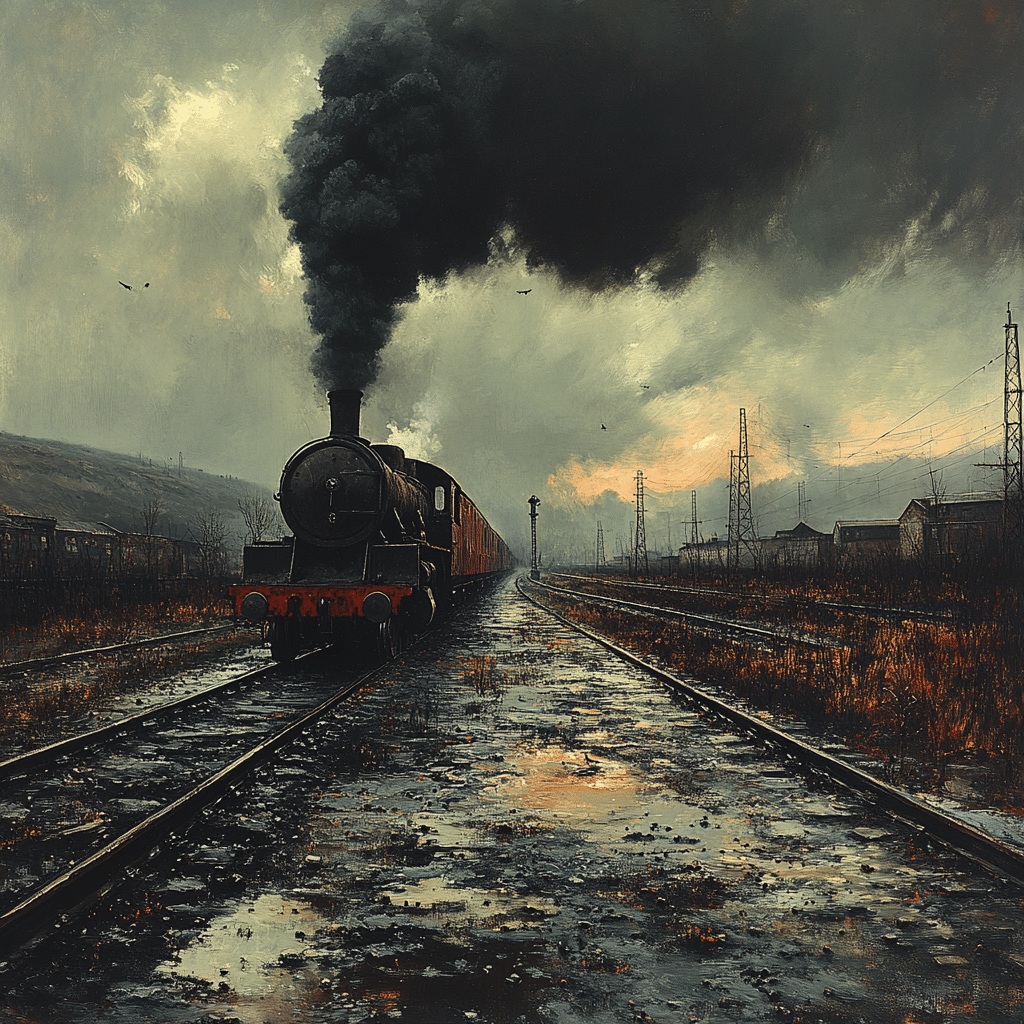The Rich History of Coalisland’s Coal Mining Industry
Coalisland, nestled in County Tyrone, Northern Ireland, boasts a vibrant history that is deeply tied to the coal mining industry. From its inception in the late 18th century, coal discovered in the vicinity of the town transformed it into a bustling center for mining, contributing not only to local prosperity but also to national energy demands. As the years progressed, coal became the backbone of Coalisland’s economy, shaping its community, culture, and environment.
Imagine a time when the sound of pickaxes echoed through the mines and the scent of coal dust filled the air. This industrious atmosphere fostered labor unions, igniting discussions on workers’ rights and safety amidst a backdrop of significant economic growth. Coalisland’s narrative is one of resilience, solidarity, and grit, showcasing how the lifeblood of coal literally formed the roads, schools, and social structures we see today. Without the coal mines, the town would not exist.
The town’s name itself reflects this historical blend—“COAL” signifies the mines, while “ISLAND” refers to the canal and harbor, known as the Basin, that played a pivotal role in its transport infrastructure. The development of these transport routes connected Coalisland to larger markets, costing local workers their lives but paving the way for generations to come.

Top 5 Coal Mines That Shaped Coalisland’s Identity
Established in the early 19th century, Moygashel stood as a titan among mining operations. Its enormous workforce and innovative extraction techniques propelled Coalisland into an industrial powerhouse, showcasing how coal could be extracted efficiently. The standards set at Moygashel contributed to advancements in mining practices throughout the UK, solidifying Coalisland’s importance in the energy landscape.
Coneywarren Pit didn’t just mine coal; it served as a crucible for labor rights during the Industrial Revolution. As miners gathered to demand better working conditions, their collective spirit became part of the fabric of Coalisland. This coal pit signified the hard work and subconscious battle of the people, who, through unity, pushed for equality and safety on the job.
Opening its doors in the early 1900s, Greencastle Mine wasn’t just a local operation—it was a key player in the export market. Its coal found its way to England and beyond, contributing to the region’s prosperity and technological advancements. Investors recognized the mine’s potential and funneled resources into innovations that would eventually alter coal extraction methodologies not only in Coalisland but also in areas far and wide.
Tullywiggan made its mark with innovative shaft mining, becoming a training ground for miners who honed their skills before venturing into global markets. With its focus on education, the mine equipped generations of workers with knowledge that extended far beyond Coalisland’s borders. Its legacy emphasizes the town’s role as a crucial player in shaping the mining industry and its workforce.
The closing of Carland Colliery in the 1980s marked the end of an era for Coalisland. As one of the last operating mines, its shuttering triggered conversations about economic diversification and sustainability. While the community mourned the loss, discussions began that charted a path toward a new economic landscape—one that honors the hard work of those who came before while seeking new opportunities.
The Impact of Mining on Coalisland’s Infrastructure and Economy
The influence of the coal mining industry has left a profound impact on the infrastructure of Coalisland. Railways sprang up to transport coal to ports, allowing for efficient trade that turned Coalisland into a central figure in the energy sector. Revenue generated from mining activities helped build roads, schools, and healthcare facilities, effectively laying the groundwork for modern community development.
But the changes didn’t come without their challenges. While the boom years of coal created wealth and job opportunities, the gradual decline in the industry during the late 20th century led to economic turbulence. Coalisland grappled with the reality that its once-thriving economy now demanded diversification and innovative solutions to thrive in an ever-evolving market.
This shift in economic focus has led to discussions about revitalizing the town. An emphasis on tourism, local business support, and community initiatives is being cultivated, allowing Coalisland to embrace its rich history while pushing for forward-thinking economic solutions.

Cultural Legacy of Coalisland’s Mining Heritage
The cultural legacy of Coalisland’s mining heritage is alive and well today. Local organizations, like the Coalisland Historical Society, are dedicated to preserving the narratives, stories, and artifacts of miners’ lives. By collecting photographs and items from the era, these organizations create a bridge between past and present, ensuring future generations grasp the struggles and successes that shaped Coalisland.
Take, for instance, the annual Coal Miner’s Festival that brings the community together. Folks from all walks of life gather to honor their history, sharing songs, stories, and even food that reflects their coal mining past. This event serves not just as a commemoration—but as a reminder of the strength and unity that characterized the community.
The artistry emerging from Coalisland, inspired by its mining past, captivates both locals and visitors. With increasing exhibits in local galleries and during cultural festivals, the stories and experiences of coal miners are finding their way into literature and visual arts. This artistic expression mirrors the richness of their heritage, creating a vibrant culture that continues to grow and thrive today.
Future of Coalisland: Balancing Heritage and Development
As Coalisland steps into 2024, there’s an invigorating push to maintain a balance between preserving its coal mining heritage and promoting sustainable development. Local authorities are exploring innovative ways to transform former mining sites into community hubs, fostering tourism and small business growth.
The focus on balanced transformation aims to recognize and respect the local culture while engaging in economic diversification. Such initiatives speak to the dedication of Coalisland’s leaders to both honor the past and embrace a promising future. Projects that weave together historical significance with modern innovation show tremendous promise for the town as it evolves.
By marrying respect for heritage with ingenuity, Coalisland stands poised to carve out its place in the 21st century. A commitment to utilizing its historical context in future developments ensures that the legacy of coal mining will not be forgotten but instead celebrated and built upon for many years to come.
In sum, Coalisland’s rich tapestry of history, culture, and innovation reflects the heart and soul of a community that has thrived against the odds. As it ventures into a new phase of growth, this historical gem remains a vital piece of Northern Ireland’s heritage—one that balances the past’s legacy with a vision for a sustainable future.
Coalisland: A Historical Gem of Coal Mining Heritage
A Peek into Coalisland’s Rich Past
Did you know that Coalisland was a thriving coal mining town back in the day? The town boasted numerous collieries and was a key player in Northern Ireland’s industrial boom. What’s more, at the height of its coal industry, locals often referred to it as “The Heart of the Valley.” Its coal production fueled progress not just locally, but across the region. This bustling industry forged a tight-knit community that celebrated its victories and weathered its hardships together.
It’s fascinating how the remnants of the past still reflect in the architecture today. Walking through the town, you might stumble upon buildings that tell stories of a bygone era, much like the intriguing history behind cheap Hobbies which remind us how people found joy amidst laborious days. And while Coalisland offers a glimpse into industrial history, you might also find you’re within reach of other local gems like Clydach, known for its own rich cultural tapestry. This blending of stories helps paint a fuller picture of what life has been like in Northern Ireland.
Trivia That Makes You Go ‘Wow!’
Here’s an interesting tidbit: Coalisland was once home to a thriving traditional music scene, which still influences the area today. As the sounds of fiddles and accordions filled the streets, the spirit of community shone through, reminiscent of a lively night at American Horror story season 10 screenings—where every episode invites its own mix of drama and storytelling. Speaking of stories, did you know Coalisland was also referenced in works that touch on everything from local folklore to modern-day dramas like the character Maddy From Euphoria? These connections highlight how Coalisland remains an inspiration in various cultural narratives.
Finally, the artistic spirit of Coalisland, interwoven with its industrial past, has led to surprising collaborations and modern endeavors—much like the buzz surrounding Ksi Prime. Such blending of old and new is not just limited to the arts; local families have even embraced outdoor activities like gardening, inspired by chic Lowes patio furniture to enhance their spaces. This combination of heritage and innovation is what makes Coalisland a fascinating historical gem just waiting to be explored!

Is Coalisland Catholic or Protestant?
Coalisland has a predominantly Catholic background, with about 93.8% of its residents identifying as Catholic, while only around 4.7% are from Protestant or other Christian backgrounds.
Why is Coalisland called Coalisland?
The name Coalisland comes from its history; “COAL” refers to the coal mines that were vital to its development, and “ISLAND” relates to the canal and the harbour, or Basin, that were central to the town.
What is in Coalisland?
Coalisland has several points of interest, including its historical coal mining sites, the canal, and various community facilities, making it a unique blend of history and local culture.
How long is the coalisland canal?
The Coalisland canal stretches for about 3.5 miles (approximately 5.6 kilometers), playing an important role historically for transportation and trade in the area.
Which Protestant is closest to Catholic?
Generally speaking, the Methodists are often viewed as the Protestant denomination that shares the most similarities with Catholic beliefs, as they often emphasize similar values and community practices.
What is the population of Coalisland?
The population of Coalisland is around 5,000 people, making it a small but vibrant community with a rich history.
Are there any coal mines in Ireland?
Yes, there are remaining coal mines in Ireland, though many have closed over the years due to economic and environmental reasons.
Why is Dungannon called Dungannon?
Dungannon gets its name from the Irish “Dun Geanainn,” which translates to “the fort of Geanainn,” a reference to its early history and settlement.
Is Dungannon a town?
Yes, Dungannon is indeed classified as a town and serves as an important town in County Tyrone, Northern Ireland.
What is in Chetwynd?
Chetwynd is known for its scenic surroundings and is home to a few parks and local amenities that serve the residents and visitors.
What is in Dawson Springs?
Dawson Springs is famous for its mineral springs and offers a charming atmosphere with parks, walking paths, and local attractions for a relaxed visit.
What is in warman?
Warman is recognized for its community spirit and offers amenities such as parks, schools, and recreational facilities for residents and families to enjoy.
What is the longest canal in the world?
The longest canal in the world is the Grand Canal in China, which stretches over 1,100 miles (about 1,700 kilometers) and connects various regions of the country.
How deep is the Oklahoma City canal?
The Oklahoma City canal is about 6 feet deep in most areas, providing a unique waterway for recreational activities within the city.
How many hours does it take to cross the canal?
Crossing the canal usually takes a few hours, depending on the mode of transportation and the specific route taken.



